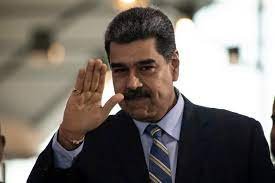The Trump tariff threat on India has once again stirred controversy, potentially upending US-India relations. Former President Donald Trump has threatened to impose substantial tariffs on Indian goods in response to India’s continued imports of Russian oil. This bold declaration has sparked criticism and concern, as the two nations navigate an already delicate geopolitical and economic balance.
Why the Trump Tariff Threat on India Matters
In a post on his Truth Social platform, Donald Trump accused India of buying massive amounts of Russian oil and making big profits,adding that India’s actions are indirectly supporting Russia’s ongoing war in Ukraine. Trump expressed his intention to substantially raise the tariff paid by India to the USA as a punitive measure.
The Trump tariff threat on India carries significant implications for bilateral trade. According to data from the Office of the United States Trade Representative, US goods and services trade with India totaled an estimated $191.3 billion in 2023. India was the United States’ ninth-largest trading partner that year. Any increase in tariffs could damage this trade flow, harm businesses on both sides, and strain diplomatic ties.
India’s Response: Unjustified and Unreasonable
India has strongly rejected the criticism, calling it unjustified and unreasonable.Foreign Ministry spokesperson Randhir Jaiswal defended India’s oil imports from Russia, stating that traditional energy suppliers had diverted resources to Europe after the outbreak of the Ukraine conflict. He noted that India’s purchases were meant to ensure “predictable and affordable energy costs” for its large domestic market.
Statement by Official Spokesperson⬇️
— Randhir Jaiswal (@MEAIndia) August 4, 2025
🔗 https://t.co/O2hJTOZBby pic.twitter.com/RTQ2beJC0W
More pointedly, Jaiswal argued that countries criticizing India are themselves continuing trade with Russia in various sectors. For example:
- The United States still imports uranium hexafluoride for its nuclear industry and palladium for electric vehicles from Russia.
- European Union nations continue to buy Russian fertilizers, chemicals, and even machinery.
This counterargument highlights the geopolitical complexity surrounding energy trade and the double standards often embedded in international diplomacy.
Trump’s Broader Critique
The Trump tariff threat on India is not a standalone policy shift. Trump has voiced broader discontent with India’s trade practices. On July 31, he posted that India’s tariffs are among the highest in the world,” claiming that “we have done very little business with India.
He added: “I don’t care what India does with Russia. They can take their dead economies down together, for all I care.” These remarks reflect Trump’s frustration not only with India’s Russia policy but also with what he perceives as unfair trade conditions and India’s membership in BRICS — a bloc Trump views as antagonistic to US interests.
Tariff Details Remain Unclear
As of now, the exact figures and sectors targeted by the potential tariff hikes remain unclear. Trump has suggested a 25% tariff, coupled with an additional 10% penalty for countries aligning with “anti-American policies” of BRICS. If implemented, such a tariff would target India more aggressively than other major US trading partners and jeopardize months of trade negotiations.
Stephen Miller, Trump’s deputy chief of staff and one of his key aides, reinforced the message during a Fox News interview. He emphasized that India’s purchase of Russian oil is essentially financing the war in Ukraine, comparing India’s import levels to those of China — a claim intended to raise alarm among US lawmakers and voters.
Potential Fallout for US-India Relations
The Trump tariff threat on India comes at a sensitive time. Washington and New Delhi have been working on strengthening strategic ties, particularly in technology, defense, and counterbalancing China’s growing influence in Asia. A sharp policy shift could derail this progress.
- Tariff retaliation: India could respond with counter-tariffs, as it has done in past trade disputes with the US.
- Trade negotiations setback: A looming trade deal under negotiation may be paused or scrapped.
- Geopolitical shifts: Pushing India further away could weaken America’s efforts to form a reliable Indo-Pacific alliance.
What’s Next?
India has stated that it is studying the implications of Trump’s threat and remains committed to securing a fair trade deal with the US. However, if the Trump tariff threat on India escalates, it may prompt New Delhi to deepen its ties with alternative partners, including Russia, China, and members of BRICS.
With the 2024 US presidential elections drawing near and Trump’s rhetoric growing sharper, India is likely to proceed cautiously. Whether these threats materialize into official policy remains to be seen — but the underlying tension reflects broader shifts in global alliances and economic power dynamics.
The Trump tariff threat on India underscores the complex intersection of global trade, energy politics, and diplomacy. While the US pushes back against Russian allies, India defends its energy independence and national interests. Whether this conflict will resolve diplomatically or escalate into a full-blown trade war depends on the choices made in the months ahead — by both Washington and New Delhi.



